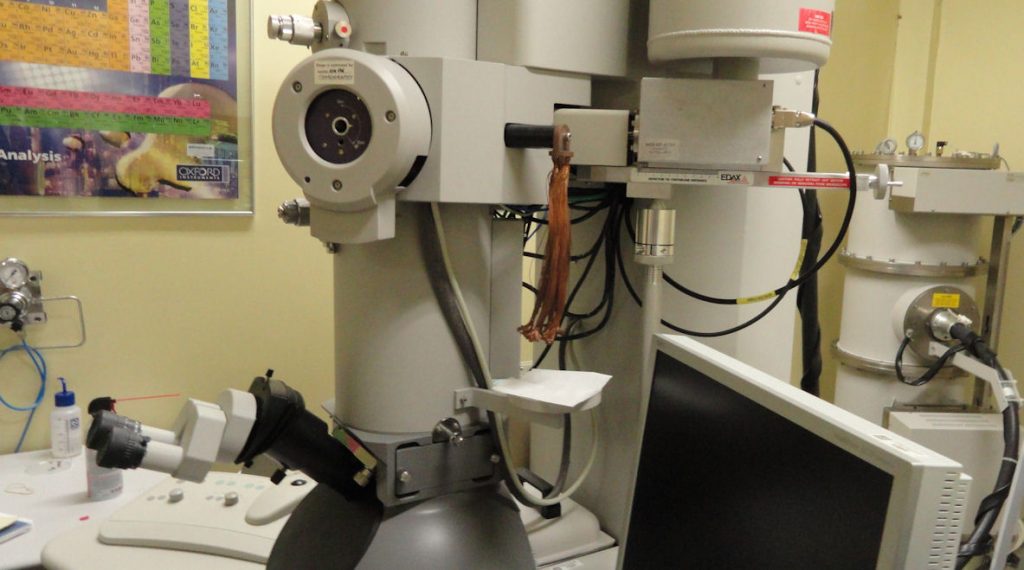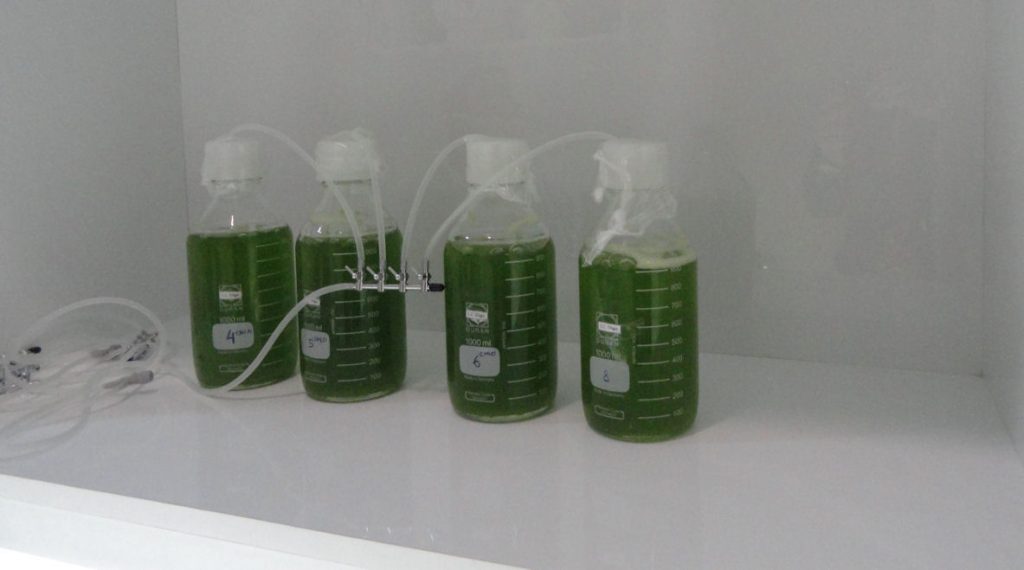
Recife and the state of Pernambuco are some of the places in Brazil that have changed the most in recent years. In fact, the whole of the Northeast has been changing. It is still the poor part of the country, but it is catching up. Recife is now a center of high technology and a magnet for high tech businesses. Centro de Tecnologias Estratégicas do Nordeste (CETENE) is a part of this.
CETENE was founded in 2005 by the Ministry of Science and Technology. Its mission is to develop and disseminate technology in the area of the Northeast. This includes nanotechnology and biotechnology. One of the main thrusts is the development of energy using the resources of the Northeast, which include lots of sunshine (for solar energy) and long growing seasons. They are working on plant varieties and biotechnology that will produce fuels such as ethanol and biodiesel more efficiently. They are also cooperating with EMBRAPA to produce blight resistant varieties of plants for the Northeast.
I hit it off well with Giovanna Machado, who specializes in nanotechnology and her colleague Andréa Baltar Barros, who does biotechnology. Biotech and nanotech are truly the industries of the future since they deal with basic materials we use to construct our lives and with life itself. Giovanna is interested with working with us on a mentor program for women and girls in science. Our role would be to facilitate the sharing of American experience, maybe do some CONX programs or even a speaker tour. Our Consulate is working on this program.

The facilities at CETENE are modern and well equipped. Most interesting for me was the electronic microscopes that can see down past the molecular level (see nanotech). These devices are so sensitive that vibrations caused by far away traffic or even the waves on the sea can cause them to malfunction. Giovanna told me that the ground in Recife is a little unstable. The city is not build on bedrock. To address this, CETENE has an elaborate system of balances. We talked about the strength and versatility of carbon nanotubes and the strange properties of elements at the nano-level. Gold, for example, is a superb conductor and catalyst, but very expensive. At the nano-level a less expensive metal such as copper can be made to have the same properties as gold. It has to do with surface areas. The surface area is the only part of a material that really interacts with others. Nanotech can alter this interaction. Nanotechnology has the capacity to essentially eliminate shortages of crucial products, such as rare earth elements, since manipulating substances at the molecular level make other things do the same job. Manipulated copper might be ersatz gold, but if it behaves like gold in the way you need it to, does it really matter? The dreams of the alchemists may yet be realized in ways they could never have imagined.
Just to add a little background – A nanometer is a one billionth of a meter. How small is that? It is so small that a human hair is 100,000 nanometers thick, an average man is 1.7 billion nanometers tall, a strand of DNA is 2-3 nanometers & an atom is 1/10 of a nanometer. You can’t see a nanometer with your naked eye or even with the most powerful optical microscopes. But we can see them with our electronic microscopes mentioned above and nanotechnology means we can now manipulate matter at the atomic level. This is nanotechnology, one of the most exciting industries of the future.
For most of the activities of our daily lives, the things we can see with our eyes, Newtonian physics works just fine. But when things get very small, on the nano level, elements behave in different ways. A nano-particle is not the same as a molecule. Molecules are stable. Nano-particles are not because they behave according to the rules of quantum physics. Don’t ask me to explain that.
Nanotech is an enabling technology. For example, nanotechnology is already being used in medicine. A nano-particle can deliver medicine directly to cancer cells and kill them w/o affecting neighboring cells. Some nano-particles can be activated by infrared or magnetism. In that case, a nano-particle could be directed to a cancer cell and then activated to get hot and kill the cancers. These advances have developed only in the last five years.
We are now familiar with the stain repelling, wrinkle free fabrics, even sox that won’t stink. These were developed using nanotechnology. We also have self-healing paints. For example, paint on a car that can cover its own scratches. The closest thing to a mass produced commodity product today are carbon nano tubes. They can be stronger than steel but at almost no weight.

Biotechnology is similar to nanotechnology in that scientists are changing the properties of things, in this case living things and their DNA codes. (This has often created reactions among those who fear the new science and there have been bans of biotech products and crops.) It is also similar to nanotechnology in that the things they are working with are very small. I didn’t learn much about the specific biotechnology experiments. I have to admit that I would have had trouble understanding some of it even if we were speaking English instead of Portuguese. But I can give you some of the simple-man conclusions.
Among the things they are working on are yeasts and algae that secrete biofuels (see biofuels). For example, they have some kind of fermentation that produces biodiesel instead of alcohol. They also had some kind of algae that is supposed to break the bonds in water, releasing oxygen and hydrogen. This is what is pictured above. Photosynthesis normally separates oxygen from carbon in CO2. This also separates oxygen from hydrogen, don’t know how. I do know that hydrogen is a superb fuel, but it doesn’t have much mass. In its natural (gas) form, hydrogen has only 1/24 the weight of gasoline and takes up lots more space per unit of energy. That is why it will never be used directly to drive vehicles. A pound of hydrogen has more energy than a pound of gasoline, but a pound of gasoline is much denser. A gallon of gasoline contains four times the energy of a gallon of LIQUID hydrogen, which would require high pressure tanks to maintain. But hydrogen can be used to generate energy using fuel cells at fixed locations and since energy is fungible to some extent this will address the liquid energy problem.
We talked a little about cellulosic ethanol. I used to have great hopes for that, but I don’t anymore. They told me that the science would eventually make it possible to make ethanol from cellulose at an acceptable cost, but the real market for it might not be there.
For a little background – Cellulose is common in farm and forestry wastes and is “available” as a feed stock, but it also has other characteristics. Most notably, cellulose waste is bulking, heavy and it tends to burn well. It will never make practical sense to move all this stuff to factories to be turned into ethanol, a process which will produce relatively little energy in return for the massive input. The most useful alternative is what the Brazilians already do with bagasse (the mostly cellulous remains of sugar cane after the sugar is extracted) and what many pulp, paper and wood mills do with their sawdust and scraps: burn them on site to produce electricity. This is a good use if we remember the more inclusive word bioenergy instead of the narrower biofuel. This woody biomass is a vastly underutilized bioenergy source. If we use electric cars, it would be good if the electricity is produced from a carbon neutral source such as woody biomass.
In Brazil, not only does the bagasse fuel most of the ethanol plants that use sugar as a raw material, they also produce electricity for the Brazilian grid. It is especially useful because the cane harvest season coincides with the dry season in Brazil, when the hydroelectric plants have less water. Why would you give up the real benefits of bagasse as a fuel to chase the chimera of cellulosic ethanol?
The most promising bioenergy that might replace petroleum is not really bioenergy at all, but rather is a byproduct. Much of our modern industrial society is petroleum based and much of that is not the stuff we burn. Plastics, drugs, fertilizers and many composites even the paving on our streets is petroleum based. We could replace liquid petroleum fuel a lot easier than we could do without many of these petroleum based products. But when we recall that petroleum is a biofuel, we can see that we could use bioenergy production to replace petroleum in many of these uses. In fact, Middle Eastern potentates feel more acutely threatened by developments in alternative materials than they do the development of alternative fuels. As long as we need the “byproducts” production of oil etc is assured.
The problem for CETENE, they told us, was the difficulty they have in translating science into practical applications. We talked about other research parks in the U.S. and I mentioned Research Triangle in North Carolina. I was surprised that they did not know about it, but we will follow up with information and maybe a CONEX program or speaker tour. We will be in touch.
